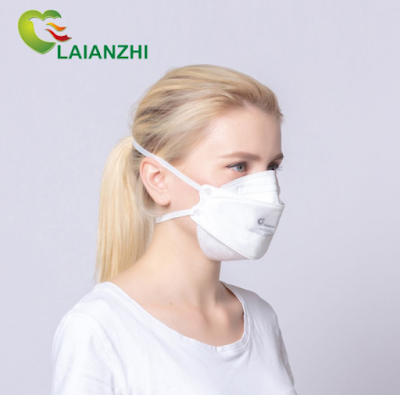How does a KN100 mask differ from N95?
In the realm of respiratory protection, KN100 masks and N95 respirators stand as titans. These formidable pieces of personal protective equipment (PPE) play a crucial role in shielding individuals from airborne hazards, but what sets them apart? In this article, we will unravel the distinctions between KN100 masks and N95 respirators, shedding light on their filtration capabilities, standards, and applications.
Similar Mission, Varying Standards
Both KN100 masks and N95 respirators share a common mission: to filter out airborne particles and provide a safeguard against hazardous contaminants. The numbers, "100" for KN100 and "95" for N95, hint at their filtration efficiencies. KN100 masks are designed to filter out at least 99.97% of airborne particles, while N95 respirators aim for a minimum of 95% filtration.
KN100 Mask: A Closer Look
Filtration Efficiency:
The cornerstone of a KN100 mask lies in its remarkable filtration prowess. With a filtration efficiency of 99.97%, these masks are engineered to capture even the tiniest particles, including bacteria, viruses, dust, and pollutants. This extraordinary level of protection makes KN100 masks a preferred choice in environments with extremely high levels of airborne hazards.
Applications:
KN100 masks find their niche in specialized settings where the risk of exposure to hazardous particles is exceptionally high. Industries such as pharmaceuticals, nuclear power, and certain manufacturing sectors utilize KN100 masks to shield workers from potential airborne toxins that demand the utmost filtration efficiency.
N95 Respirator: A Comprehensive Overview
Filtration Efficiency:
While not reaching the same remarkable filtration level as KN100 masks, N95 respirators are no less effective. Their minimum 95% filtration efficiency still provides a robust barrier against a wide range of airborne particles, including those encountered in healthcare, construction, and industrial settings.
Fit and Standards:
One of the critical aspects that sets N95 respirators apart is the comprehensive testing they undergo. Regulated by the National Institute for Occupational Safety and Health (NIOSH), N95 respirators are subjected to stringent fit testing in addition to filtration testing. This dual testing approach ensures that wearers not only benefit from effective particle filtration but also from a secure fit that prevents air leakage around the mask's edges.
Applications:
N95 respirators are ubiquitous in healthcare environments, offering reliable protection to healthcare workers against infectious diseases. Their effectiveness extends to construction sites, where they guard workers against dust and pollutants. During public health crises, N95 respirators become a sought-after defense against respiratory viruses.
Standards and Certification: KN100 vs. N95
KN100 Mask:
KN100 masks adhere to the Chinese standard GB2626-2006, which mandates their extraordinary 99.97% filtration efficiency. This standard ensures a high level of protection in environments with exceptionally hazardous particles. However, it's important to note that the Chinese KN100 standard might not be recognized or required in all regions.
N95 Respirator:
Regulated by NIOSH under the 42 CFR Part 84 standard, N95 respirators follow strict guidelines to achieve their 95% filtration efficiency. They also undergo rigorous fit testing to ensure an adequate seal on the wearer's face. This comprehensive certification approach has solidified N95 respirators as a gold standard for respiratory protection, particularly in healthcare.
Which One Should You Choose?
The decision between a KN100 mask and an N95 respirator hinges on several factors:
1. Hazard Level:
Evaluate the level of airborne hazards you are likely to encounter. If you are working in an environment with extraordinarily hazardous particles, such as radioactive or highly toxic materials, a KN100 mask might be more suitable due to its higher filtration efficiency.
2. Recognized Standards:
Consider the regulations and standards in your region. N95 respirators certified by NIOSH are often required in healthcare settings in regions where NIOSH standards are recognized.
3. Fit and Comfort:
A snug fit is vital for respiratory protection. N95 respirators undergo fit testing, making them a strong choice when a secure seal is crucial.
4. Availability:
In times of high demand or limited supply, the availability of either KN100 masks or N95 respirators may vary. Consider what options are accessible to you without compromising your safety.
Conclusion: A Matter of Precision
Both KN100 masks and N95 respirators stand as powerful allies in the battle against airborne hazards. While KN100 masks excel in their filtration efficiency, N95 respirators counterbalance with stringent fit testing and widespread recognition. Ultimately, the choice between the two hinges on the nature of your work, the hazardous particles you are likely to encounter, and the regulatory standards in your region. Regardless of your choice, the common goal remains: to safeguard your respiratory health with precision and care. Always prioritize quality, fit, and proper usage to maximize the protective benefits of these exceptional pieces of personal protective equipment.

评论
发表评论